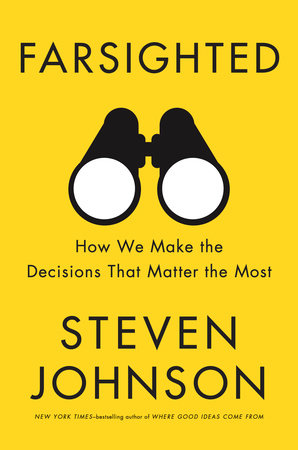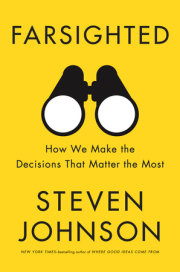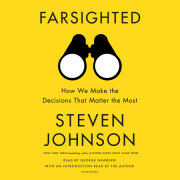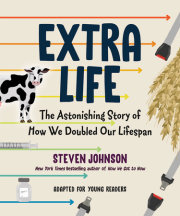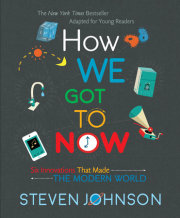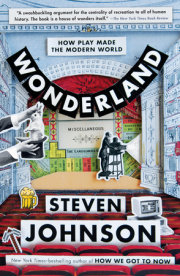Mapping
"If we had a keen vision and feeling of all ordinary human life, it would be like hearing the grass grow and the squirrel's heart beat, and we should die of that roar which lies on the other side of silence. As it is, the quickest of us walk about well wadded with stupidity."
—George Eliot, Middlemarch
Long before Brooklyn became one of the most densely populated urban regions in the country, back when it was a modest hamlet on a bluff overlooking the prosperous harbor town of New York, a long ridge of thick woods ran through the center of the borough's current borders, stretching from present-day Greenwood Cemetery through Prospect Park all the way to Cypress Hill. Locals had given it a name straight out of Tolkien: the Heights of Gowan.
As geological formations go, the Heights of Gowan were hardly unusual. At their peak, they rose only two hundred feet over the glacier-flattened plains and tidal ponds of Long Island. Yet in the summer of 1776, the Heights found themselves at the center of world history. Just months before, the British had endured a humiliating retreat from Boston. Capturing New York, the trading center of the colonies and the gateway to the mighty Hudson (then called the North River), was the obvious countermove, given the British dominance in sea power.
Perched at the tip of an island facing a vast bay, New York presented an easy target for the king's armada. The problem lay in holding on to the city. From the fortified bluffs of modern-day Brooklyn Heights on Long Island, downtown New York could be continuously bombarded. "For should the enemy take hold New York while we hold on to Long Island, they will find it almost impossible to subsist," American general Charles Lee wrote. To hold on to the city without heavy casualties, British commander William Howe would ultimately need to capture Brooklyn. And Brooklyn was protected by the Heights of Gowan. It was not the topography that created the natural barricade but rather the dense canopy of eastern deciduous forest that covered the ridge, with its towering oaks and hickory trees and heavy thicket on the ground. An army could not hope to move a large mass of men and equipment through such an environment, and besides, if the battle turned into the forest, the Revolutionary forces would have the upper hand.
The Heights were not a perfect barricade, however. Four roads cut through the woods from south to north: Gowanus, Flatbush, Bedford, and a small gorge that went by the name Jamaica Pass. If the British chose not to make a direct assault on Brooklyn or Manhattan from the water, they would likely have to move their troops through these narrow conduits.
From the moment word spread in early June that the British ships had left Halifax, headed south, it was clear to everyone that the British would attempt to take New York. The question was how they would go about doing it. That was the crux of the decision that confronted George Washington in the long, quiet summer of 1776, as an imposing armada-the "four hundred ships in New York Harbor" that appear in the opening minutes of Hamilton-took anchor off the shores of Staten Island. Should he defend Manhattan or Brooklyn? Or, perhaps, should he concede that New York was beyond defending, a hopeless cause, and move the fight to more promising ground?
Washington was confronting a classic example of a full-spectrum decision, one that required him to think simultaneously on several different scales of experience. To make the right decision, Washington had to think about the topography of the land, those ridges and bluffs and beaches; he had to think about the notoriously unpredictable currents of the East River, which could wreak havoc on any attempt to rapidly move troops between New York and Brooklyn; he had to think about the physics of war-the cannons of those British warships, and the durability of the defenses he had built along the waterfront of the city; he had to think of the morale of his troops, and the Continental Congress back in Philadelphia, sending him directives demanding that he not surrender such a valuable city and harbor. The decision had an ethical dimension as well: Faced with such an imposing enemy, was it right for Washington to send so many young lives into a battle they were likely to lose?
Washington had no shortage of variables to consider, but he also had something else: time. From the moment the British abandoned Boston, Washington had been wrestling with the question of New York's defense. He had arrived and established residence at 1 Broadway, at the very tip of the island, in early April. With the counsel of General Lee and the brilliant general Nathanael Greene, he had been surveying and directing the fortification of New York and Brooklyn for months before the British armada appeared. By the time General Howe had finally ordered his men to make their assault on New York in late August, Washington had had nearly half a year to decide on the best strategy for defending the city.
When Washington finally did make his decision, it would prove to be the most catastrophic of his entire career.
The Blind Spot
Part of what the epic choices of literature and history have to teach us lies in the inverted wisdom of failed decisions, the mistakes we can learn from, either because they point to some nagging feature of the human mind that undermines us or some failing of our environment that sends our choices down the wrong path.
In the summer of 1776, Washington's initial mistake was to even defend New York in the first place. It was, by every account, a hopeless cause. Outnumbered by the British two to one, and facing an impossible disadvantage in terms of sea power, the smart move would have been to surrender the city. "It is so encircled by deep, navigable water that whoever commands the sea must command the town," Lee wrote to Washington. But Washington seemed incapable of contemplating giving up such a valuable asset so early in the fight.
After he had committed to defending the city, Washington made a series of crucial tactical errors in deploying his troops. Unwilling to bet decisively on whether Howe would attack Manhattan Island directly or attempt to take Long Island first, Washington spread his troops between the two locales. Even after word arrived in late August that British troops had landed at Gravesend Bay, near modern-day Coney Island, Washington clung to the idea that the landing on Long Island was a mere feint, and that a direct attack on Manhattan might still be Howe's true plan.
Washington did, however, send additional regiments to guard the roads that led through the Heights of Gowan-at Bedford, Flatbush, and Gowanus. Each of those roads was so narrow and well protected that any attempt to thread the British forces through would result in heavy losses for Howe. But Howe did not have his eye on those more direct routes to Brooklyn. Instead he sent the vast majority of his troops all the way around to the farthest point of the Heights, to the Jamaica Pass, in one of the great flanking moves of military history. In doing so, he exploited to deadly effect the most egregious mistake of Washington's entire career. While Washington had dispatched thousands of troops to guard the other three roads, only five sentries were planted near a lonely establishment named the Rising Sun Tavern at the entrance to the Jamaica Pass. The five men were captured without so much as a single shot fired.
Once Howe moved his men through the rocky gorge, he was able to make a surprise assault on the rebel troops from the rear. While the Battle of Brooklyn raged on for another seventy two hours, it was effectively over the moment Howe made it through the Jamaica Pass. Within two weeks, New York belonged to the British, though Washington did distinguish himself by plotting an overnight evacuation of all his ground forces from Brooklyn-shielded by a dense fog that had settled over the harbor-a move that managed to keep most of his army intact for the subsequent battles of the Revolutionary War. This is the great irony of the Battle of Brooklyn: Washington's most cunning decision came not in his defense of New York but in the quick confidence of his decision to give it up.
Washington's decisions were ultimately so flawed that the American side never really recovered from them, in that New York remained under British control until the end of the war. But, of course, Washington's side did ultimately win out over the British, and while Washington was never a brilliant military tactician, none of his subsequent decisions were as flawed as his botched attempt to hold on to the isle of Manhattan. Why did his decision-making powers fail him so miserably in the Battle of Brooklyn?
In his initial decision to defend the city, Washington appears to have suffered from a well-known psychological trait known as loss aversion. As countless studies have shown, humans are wired to resist losses more than to seek gains. There seems to be something in our innate mental toolbox that stubbornly refuses to give up something we possess, even if it's in our long-term best interest to do so. That desire to keep Manhattan may have led Washington to make one of the most elemental mistakes in military tactics: by leaving a significant portion of his troops behind on Manhattan, he ensured that the British would encounter a greatly diminished force in Brooklyn. His only real hope would have been in doubling down on a Brooklyn defense, but instead, unable to countenance the idea of leaving the crown jewel undefended, Washington hedged his bets.
The real mystery is why he left the Jamaica Pass so woefully undefended. Why bother going to the trouble of fortifying the roads that led to Brooklyn but still leave one wide open? The answer, it turns out, begins with a virus: several weeks before the British attack, General Greene succumbed to the "camp fever" that had been ravaging the American troops, and by August 20, his condition had deteriorated to the point that he had to be evacuated to the countryside north of the city. It was Greene who had made the most impassioned arguments that the British would attempt an all-out attack on Long Island-and, most crucially, it was Greene who possessed the most thorough knowledge of Long Island's geography. Had Greene been at Washington's side once it became clear that Howe's men were making their way toward Brooklyn, it seems impossible that the Jamaica Pass would have remained so vulnerable.
When Greene left Washington's inner circle to take to his sickbed, Washington's ability to perceive the conditions on the ground in Long Island was fundamentally compromised. This is a recurring theme in complex decisions: In trying to understand a problem with many interacting variables, it's often impossible for us to perceive all the relevant elements directly. So our decision is built out of proxies and translators, other specialized minds that report back to us with their assessment of the situation. Part of making the right decision is learning how to make sense of all those different inputs. But it is just as important to recognize the holes that have opened up in your network, the unreliable translators. Washington's army was blindsided by the British attack, but only because Washington himself seems to have been blind to the intelligence loss he suffered when Greene left his war council. It was not just that he couldn't see the geography of Long Island as clearly; it was that he failed to recognize how faulty his vision had become.
Copyright © 2018 by Steven Johnson. All rights reserved. No part of this excerpt may be reproduced or reprinted without permission in writing from the publisher.

